Once you spend a little time here on Milenomics you’ll soon come to realize we do things a little differently around here. First of all, we aren’t in the business of collecting miles. We are in the business of traveling with miles, but we don’t exactly play the same game you’ll read about elsewhere online.
The System…is Down
Part of the reason people give up on Miles is that the system itself is complicated. You have many layers, and each layer represents an area you need to master. The layers we’ll be covering for the next week or so will be:
- Earning Miles
- Spending Miles
- Partners
- Routes
- Booking Tips & Tricks
- Be Your Own Elite
Today we’ll start with Earning miles, and each day I’ll continue this introduction of sorts. We’ll move onto spending miles, Partners, Routes, Booking Tricks, and finally the Be your Own Elite Program.
Division of Posts on Milenomics
Milenomics divides posts to try to categorize the posts you’ll most likely identify with. This is done because advise doesn’t always pertain to everyone. Milenomics is not split by your amount of experience earning/using miles, or how many miles you have. Instead posts fall into one of four groupings:
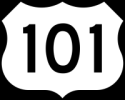 #101 Level Milenomics: Despite sounding like an introduction these posts are tailored to those of you who fly just a few times a year, and only on domestic flights. While you’re free to read other level posts don’t automatically assume they apply to you. For example a post about stopovers on international flights won’t be tagged #101.
#101 Level Milenomics: Despite sounding like an introduction these posts are tailored to those of you who fly just a few times a year, and only on domestic flights. While you’re free to read other level posts don’t automatically assume they apply to you. For example a post about stopovers on international flights won’t be tagged #101.
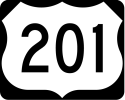 #201 Level Milenomics: Also just a few flights a year here; But with international flights included. A post talking about booking tricks that only work for international travel would be tagged 201, but not 101. Reading #101 posts can still be beneficial to a #201 especially when traveling domestically.
#201 Level Milenomics: Also just a few flights a year here; But with international flights included. A post talking about booking tricks that only work for international travel would be tagged 201, but not 101. Reading #101 posts can still be beneficial to a #201 especially when traveling domestically.
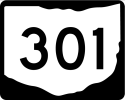 #301 Level Milenomics: A special case–You’re able to travel almost anywhere and for as many days as you like. Examples of 301 Level Milenomics would be someone with a job that can work from home (and home could be anywhere on earth), or a retired couple who loves to travel and has the time for it.
#301 Level Milenomics: A special case–You’re able to travel almost anywhere and for as many days as you like. Examples of 301 Level Milenomics would be someone with a job that can work from home (and home could be anywhere on earth), or a retired couple who loves to travel and has the time for it.
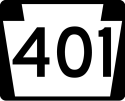 #401 Level Milenomics: These are true business travelers. Because someone else (usually your company) is paying for the majority of your miles the rules are totally different for this group. When I talk about ideas like EQM-Zero, or the Rule of 7 #401 flyers would be excluded. Elite status that someone else pays for isn’t a bad thing. Today we’ll step through earning miles, and look at how each level should earn miles in a different way. This is why a “one-size fits all” post on earning miles isn’t always appropriate.
#401 Level Milenomics: These are true business travelers. Because someone else (usually your company) is paying for the majority of your miles the rules are totally different for this group. When I talk about ideas like EQM-Zero, or the Rule of 7 #401 flyers would be excluded. Elite status that someone else pays for isn’t a bad thing. Today we’ll step through earning miles, and look at how each level should earn miles in a different way. This is why a “one-size fits all” post on earning miles isn’t always appropriate.
Earning Miles for #101 Milenomics
With an Earn-to-Burn Ratio of 1:1, or even as low as 1:2 a #101 Milenomics shouldn’t need to do much besides credit card applications. The number of cards which are out there combined with the ability to alternate and play the CCC in two player mode means years of consistent mile earning off of sign ups alone.
Since #101 level Milenomics are domestic flyers, a #101 should also consider programs such as Southwest, Jetblue, and Virgin America. Virgin and Jetblue can transfer from Membership Rewards, Southwest can be earned directly, or transferred from UR earning cards.
A quick estimate of miles needed per year would be the number of miles you wish to fly that year multiplied by 7. For example, if you yearly fly from NYC to LAX and back, and also fly from NYC to MIA:
NYC-MIA: 2186 miles r/t
the total miles flown would be 7,114. Mutliply by 7 and you get 49,798 miles needed. We can do better than this with specific programs and booking tricks (which we’ll cover later) but the basic number of 50,000 miles (per person) makes up the the “rule of 7” and gives you a quick target for your earning.
Don’t forget to include cash back cards into your applications.
At #101 levels you’ll be tempted to earn many, many more miles than you’ll need in a year. With two players applying for credit cards it isn’t out of the question to earn 500,000 or more miles in one year of applications. As you can see above you could take two trips a year for a family of 4 and use just 200,000 miles (or less with the right programs).
If you’re earning 300,000 more miles a year than you need you’re locking up miles you won’t spend for years to come. Devaluation, Depreciation and time decay will eat away at those miles. Instead focus on filling your Demand for Miles, and then switch to cash back cards.
Absolutely everyone should have the Fidelity Investor Rewards 2% cash back card. Everyone. Seriously.
Earning Miles for #201 Milenomics
Depending on your E/B Ratio you could subside just on credit card signups as well at this level. Adding international trips you’ll want to ask yourself “First class, Business Class, or Coach?” and target your earnings based on your answer. The rule of 7 will probably still work, but you’ll need to lean even more on your demand schedule in order to ensure you’re earning the right miles to get you where you want to go.
There are certain destinations which are nearly inaccessible with certain miles. Africa with AA/Oneworld for example. We’ll go over this in more detail during the Introductory post on Routes in a few days. For now check out how sparse Africa looks in this oneworld route map:
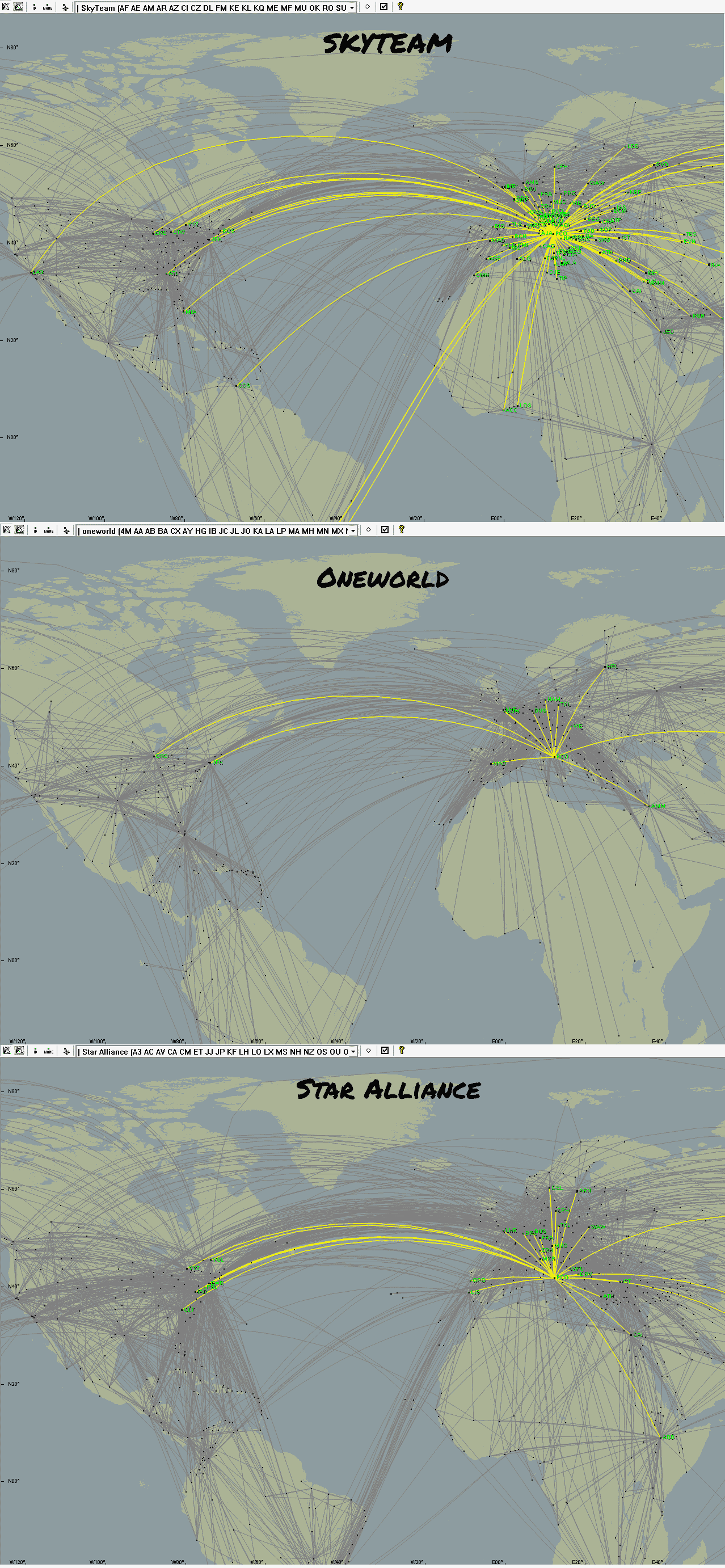
Earning Miles for #301 Milenomics
At the #301 level your need for miles is extreme. With no limit to how much you can travel a focus should be on balancing your spending when traveling. In addition you’ll be tempted to go after miles which are harder/more expensive to earn. Good cost tracking (more on this later) will be extremely important for you. Deciding between First/Business/Coach is going to be important for #301’s as well–and will only increase the number of miles you’ll need.
Credit card signups won’t be enough at this level. Consider going on Milenomics Mileage Runs (MMRs). You may be familiar with standard Mileage Runs, where you buy a flight just for the miles. Similarly, we spend money on items, like this, and this purely to earn miles. MMRs cost real money, and real time, just like a regular Mileage Run does. Keeping track of that time and money is critical.
#301’s should still balance their miles earned with those used, and a Demand schedule only gets more important for earning miles at this level. Of course reading #101 and #201 posts is also a good idea.
Earning Miles for #401 Milenomics
At the #401 level things tend to reverse a bit. Since #401 travelers may have someone else paying for their business flights they might be flush with miles they spent little or nothing on. In addition #401’s reverse the trend of unlimited time off that we see when moving from #201 to #301.
Knowing how many miles you need will dictate where you fall into the earning category. If you’re looking at one-two big trips a year you’ll be more like a #201 with earnings. If you have a flexible work schedule you could end up being more like a #301. If you mirror a #201 then focus on Credit card signups first, and see if those can fill your need for miles.
If your travel pattern and time off more closely resembles a #301 then you’ll also want to incorporate MMRs into your earning mix. #401’s are exempt from most discussion on Milenomics about how un-important Airline status can be. When someone else is picking up the tab the rules are reversed.
Beware the Hidden Costs of Miles
Miles are not Free in the Milenomics Universe. We need to focus on that fact, and keep it in mind at all times. Whether we’re paying for them with our credit score, or with our time, Miles cost real money, and earning them can affect other areas of our lives.
Spending too much time earning miles might mean you’re neglecting other areas of your life. Can we become addicted to earning miles? I’m absolutely sure we can. Hoarding miles shouldn’t be the goal of any of us–miles are a tool to use for travel; nothing more.
Time = Money
The first step in analyzing the cost of your miles is to value your time. I’ve talked about this a few times, but want to go over it again briefly because we’ve gotten so many new readers over the past few months.
Imagine your time as a valuable commodity. You have a very finite amount of it, just 1,440 minutes in one day. Once you’ve used those minutes up your day is done. Placing a value on your time is critical, and not just for miles and points.
Think of your time as having a value per hour. I often encourage people to start with their hourly rate at work, and tweak it up/down from there. I’ve been very open about my T-Rate ($25/hr) and have used it numerous times in calculating what makes sense for me. Once you give value to your time you’ll likely start to spend it more responsbily.
Cost Tracking–Knowing Your Production Costs
If you work in Manufacturing, or in any type of sales related job, answer me this question:
- Would you sell an item without knowing what it cost you to acquire/produce it?
I think we can all agree no, we would not. Yet we happily spend money, driving around, wasting time in lines at stores, and paying fees for cards, and we don’t account for these when we go to sell (use) our miles.
Milenomics asks you to start Cost Tracking. Know you average Cost per mile, and keep track of things like time and travel. Doing so will help you when we go to redeem miles for flights.
I’ve talked about earning miles on MMRs as manufacturing a non-durable good. Think of your Miles as a store of your time and money, and one that depreciates over time. Be smart and efficient in your manufacturing, and three things will happen:
- Miles earned will stay the same/increase.
- You’ll have more time on your hands.
- Out of Pocket Costs will go down.
I don’t know anyone among us who would say no to the same amount of miles, with more time and more money in our pockets. That’s Milenomics.
Wrap-Up
You might not agree with everything you read here on Milenomics–and that’s ok. While reading the blog remember that things are a little different in the Milenomics Universe. Figuring out which areas you can use to better yourself is the ultimate goal we should all be chasing.
What works for one person won’t always work for another. Even with #101, #201, #301 and #401 division there will be geographic restrictions, and other issues which mean not everything will work for every one of us.
If you have a question, or a comment Tweet me @Milenomics, or email me: SamSimonTravel@gmail.com.
And last but not least, Welcome to Milenomics.








Most people that are #401 have stopped caring about miles completely and just want cash back. I’m earning at a rate that there is no way I’d be able to redeem at, so I might as well focus my MS on cash back methods.
Thanks for the comment William. At any level (not just #401) your advice is solid: Focus on cash back once you’ve earned the miles you need for the next 1-2 years.
Something strange happens for some #401’s–they love having the miles (and status) but fear using them. I’m working with a guy right now, trying to coach him into using the miles he’s earned over the past 4 years (400k+). He’s put so much into them that he doesn’t want to touch them until he can fly his whole family to Egypt in Business. (DL Miles). He’s years away from his goal, and continuing to collect those miles without an end in sight.
Disagree with most of what you say. Goal for all who are interested in this hobby should be to accrue as many miles/points at negative cost as possible. Then you are never constrained by devaluations/availability that are the bane of those with low balances.
If you want F international at peak times, on peak routes, can redeem at whatever rate you wish (Saver or Peak). Alternatively, since you would have significant miles/points in multiple programs, you could pick and choose the best redemptions on a wide variety of destinations, something that those with limited balances can’t do.
What you suggest is to plan years in advance in a few select programs and then switch to low value 2% cashback (which is mostly a waste of time as cashout fees typically eat up half). As the slew of recent devaluations have shown, that sort of planning can be quickly obsolete and lead to a lot of stress/cancelled plans or rush to earn (or heresy, buy) the extra needed miles.
Serious hobbyists can generate millions of miles a year with relative ease. And can burn millions without batting an eye. That’s what people need to figure out how to do – the rest is noise. But then making the hobby simple would obviate the need for multitude of blogsters. And that’s heresy.
Just depends on what you want to do. Retired and like to travel, then by all means do as you suggest.
If you work a 50 hour a week professional job, you have to prioritize. You don’t have the time to spend doing 2 hours of MS activities a day, but If you plan ahead, at least you won’t need 1 million miles banked in every FF program under the sun.
Interesting, and I agree with some of your ideas. I now have way ‘too many’ AA miles, but as long as they are better than free I will keep picking them up. ~1.3 cents per mile value at hotels may be how many of them get used, but that’s still way more stays and flexibility than I could get with any hotel program. However, 4%-5% cash back cards can go a long way towards paying for the very real time that collecting millions of miles takes.
The perspective of most people is skewed toward their own circumstances. I never search for less than 4 seats because I never book less than 4 seats. I pay no attention to routings and number of stops because, with a family from a small airport, I have two choices: book and go with 3 or 4 stops, or stay home. So I have a hard time connecting with the perspective of a single person complaining that he has to fly with Delta because he’s ‘hub captive’, when in fact he has more choices on every single airline than I do. In my view, he’s just too picky by thinking an extra layover will kill him, and in his view I’m an idiot. And we are, of course, both right 🙂
Love the graphic at the top!
I remember when I first switched from cash back to miles and reading blogs about travel point collecting, I wanted to comment constantly on how much people inflate the values of rewards and discount costs in time and money.
Thanks Haley–I really want to stress that on this blog you’re entering a new way of looking at Miles, and think this post does that. Not taking anything away from other bloggers, but I’m with you, it is too easy to discount time and inflate the true value of a booking.
Is there any particular reason you used Ohio 301 and Pennsylvania 401?
Adam: Nothing too interesting, I was looking for road signs to represent each level. Living in Southern California I knew the 101 would be easy to find, but learned a lot about Highways 201, 301 and 401 in writing this post. I sometimes spend more time looking for images (especially those with the proper royalty free licenses) than I do writing a post.
The system is down?
Must be dancing robots.
I agree with Paul that one should acquire just about all the miles one can at a negative cost. My experience is that at some point’ negative cost changes to “cheap cost”, which by necessity means estimating the value of redemptions in the future. For all these cases, which are usually in the great majority, Milenomics guidelines are really good to read and understand.
My bonus, non sign-up spending will be switching to cash back since I have enough miles for several years’ travel, and I have little confidence that redemptions 4-5 years from now will be worth a present value of 2 cents today.
Very thoughtful posts. Been following for a while, keep up the great content!
Thanks Duy, and welcome!